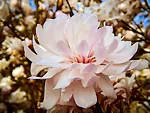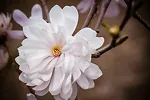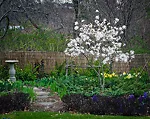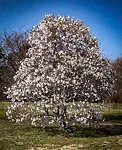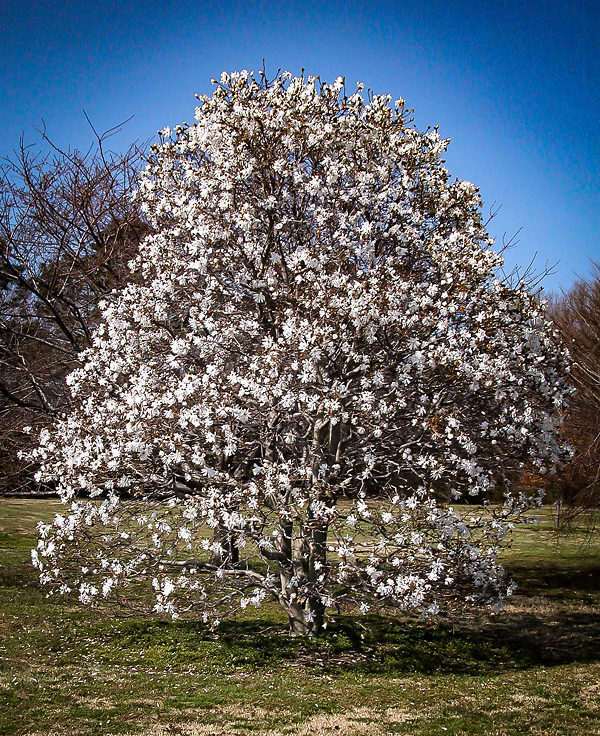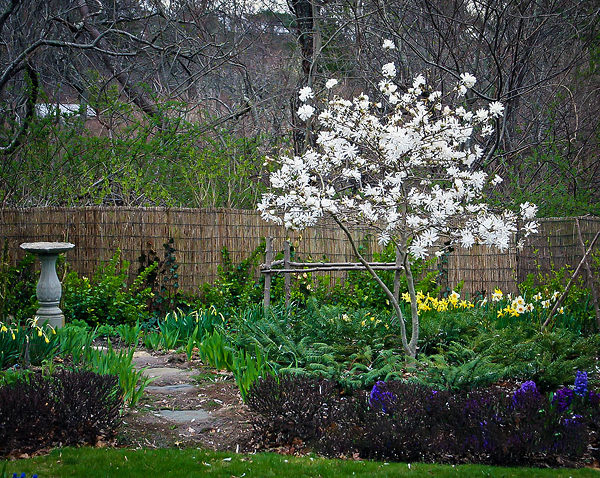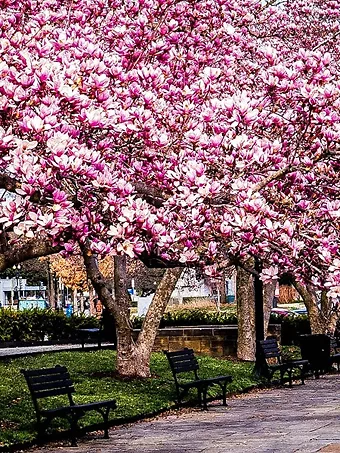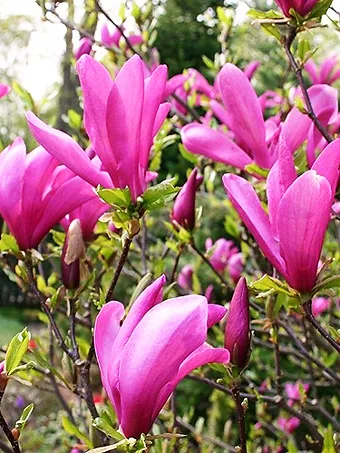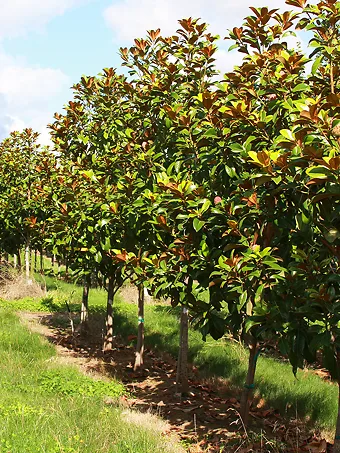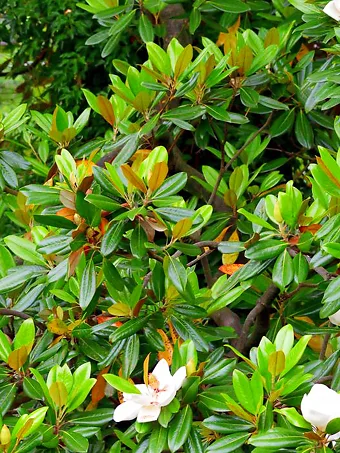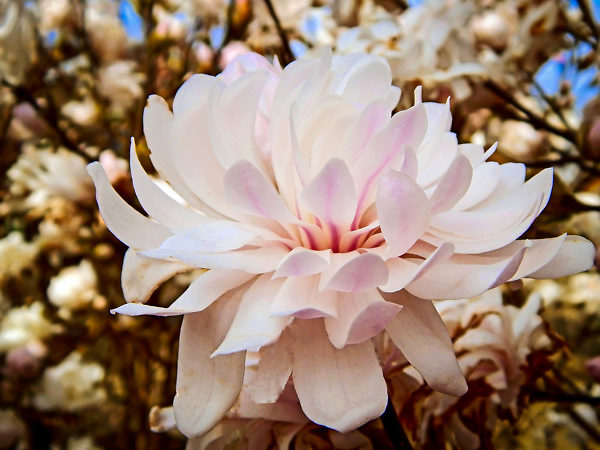
Centennial Blush Magnolia
Magnolia stellata 'Centennial Blush' (PP #22,248)View more from Magnolia Trees
Centennial Blush Magnolia
Magnolia stellata 'Centennial Blush' (PP #22,248)
30 day - ARRIVE AND THRIVE™ guaranteeLearn more


Special Features

Botanical Name
Magnolia stellata 'Centennial Blush' (PP #22,248)
Outdoor Growing zone
4-9
Mature Height
12-18
Mature Width
10-15
Sun needs
Full Sun, Partial Sun
The Centennial Blush Magnolia is a spectacular hardy tree that is smothered in huge, double, soft-pink blooms very early in spring. It is the hardiest of all the magnolias, thriving in zone 4 and even in protected spots in zone 3. It blooms on bare branches, as early as February, and it is the most prolific bloomer of all the star magnolias, with plants as young as two-years old showing their first blossoms. It grows vigorously into an upright, conical tree reaching 12 to 18 feet tall, and 10 or 15 feet wide. It is the perfect specimen for a lawn, or in a bed among later-flowering trees and shrubs. Plant it in open woodland gardens too, where it looks right at home. This tree can be easily grown everywhere in the country, and it is such a spectacular and delightful tree that no garden should be without one.
- Remarkable and spectacular early spring blooming
- Huge double blush-pink flowers
- Most profuse blooming of all the star magnolia trees
- Easily grown in almost any garden
- The hardiest type of magnolia, right into zone 3
Plant the Centennial Blush Magnolia in full sun, or with some afternoon shade in hot zones. It grows easily in almost all soils that are well-drained, and it does best in rich, moist soils, with plenty of organic material in them. It needs no pruning or special attention, and it has no pests or diseases. Despite its wonderful appearance, this is a very easy tree that will grow well in almost every garden, and it brings a unique, special charm to early spring, that no other tree can come near to.
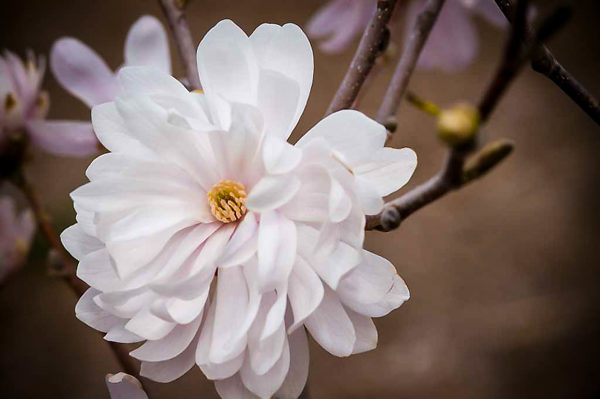
There is no doubt at all that deciduous magnolias are the queens of the early spring garden, smothered in wonderful large blooms before the leaves appear, like exotic beauties on winter vacation. Yet despite their almost overwhelming beauty, they are amazingly easy to grow, particularly the Star Magnolia, which thrives and blooms in zone 4, and even in sheltered spots in zone 3. Yet these winter-hardy trees grow just as well in warmer zones, blooming as early as February. Now we have found the crème de la crème of these treasures, the Centennial Blush Magnolia, which blooms profusely from its earliest days, and grows into a magnificent upright tree that will grace any garden, enchant every lover of beauty, and add something very special to early spring in your garden. This tree is simply unbeatable.
Growing Centennial Blush Magnolia Trees
The Centennial Blush Magnolia is a vigorous deciduous tree that will grow into a conical upright form, 12 to 18 feet high, and 10 to 15 feet wide. In early spring, among the fat, hairy buds that have intrigued you all winter fulfill their promise, and they expand on the bare branches into a multitude of large flowers a full 5 inches across. When they first emerge from their gray winter wrapping the petals are closed, and they appear purple-pink. As they open, this color becomes a stripe at the lower back of each petal, and the open flower is a soft, delicate pink.
The flowers are fully-double, that is, there are about 45 petals in every flower, compared to the more usual number of 20 or 30 seen on earlier double varieties of similar trees. Finally, the flowers give out a delicate but clear scent, worthy of an expensive, high-class perfume. These flowers are a wonder to see, and this magnolia has more flowers per branch than any other variety existing – that’s right, more than any other, and there are flowers all over the branches even on tiny plants that have just left the nursery – including yours.
When the Centennial Blush Magnolia is not blooming, it is an attractive conical tree, with smooth, light-gray bark and broad, oval leaves about 5 inches long. In winter the branches have an attractive, slightly twisted look, and the large, softly-hairy flower buds are conspicuous all winter, gradually swelling until they open in spring. The leaves appear as the flowers fade, and in summer the tree is clothed in attractive foliage. In fall the leaves turn yellow, adding a soft touch to the fall display in cooler regions.
Uses on Your Property
Plant the Centennial Blush Magnolia in a spot fit for a queen – where you can see and appreciate it when it puts on its spring parade. Perhaps as a specimen in a lawn, or among the plants around your home, beside a window, or framing a doorway. Plant it among later-flowering shrubs and trees, to begin the season with an unbeatable display of beauty. Plant one or a pair in large planter boxes to place on terraces or patios. Also, this tree looks lovely at the margins of wooded areas, so plant it in the partial shade of deciduous trees. This is particularly appropriate in hotter areas, where the summer shade will be appreciated – in colder zones this tree grows and flowers best in full sun, with some shelter from the winter winds.
Planting Location
The Centennial Blush Magnolia grows well in ordinary garden soil, doing best if you enrich the soil with organic material, and mulch in spring with more, to conserve moisture and keep the soil fertile. Young trees should be regularly watered, but older trees have moderate drought resistance. Plant in full sun, although in the hottest zones afternoon shade is beneficial, preventing the leaves from scorching and burning in heat and dryness. This tree has no significant pests or diseases and it is remarkably hardy and easy to grow.
History and Origins of the Centennial Blush Magnolia
The Centennial Blush Magnolia is a special form of the star magnolia (Magnolia stellata). This tree grows wild on Honshū, the largest island of Japan, where it forms a small spreading tree, about 10 feet tall and 15 feet wide. Wild trees have flowers with about 12 narrow, strap-like petals. Unlike most other deciduous magnolias, the flowers are flat and star-like, not narrow and upright. For a long time it was a secondary tree in our gardens, attractive but not spectacular. It was especially useful in cold areas, as it is the most cold-hardy of all the magnolia trees. Over the years though, plant breeders have improved it greatly, developing a more upright, conical tree that fits better in most gardens, and improving the flowers by increasing the petal number, and developing the natural coloring.
In the 1960s breeders at the National Arboretum grew seedlings of a pink variety called ‘Rosea’ and selected a wonderful tree they called ‘Centennial’, to commemorate the 100th anniversary of the founding of the National Arboretum, in 1972. Michael A. Dirr, a well-known plant expert and breeder from the University of Georgia collected some seeds from a tree of ‘Centennial’ and grew seedlings from those seeds. In 2010 he studied these seedling trees at the Hydrangea Garden in College Station, Texas, and selected one, for its remarkable flowers, excellent growth form, and especially for its profuse and early blooming. He called it ‘Centennial Blush’.
This is this remarkable tree we are so happy to be able to offer you, and if you live in the coldest areas, or anywhere else too, we cannot recommend this tree enough as a glorious addition to every garden. We have a limited stock of great plants, ready to bloom, so order now while our stocks last – don’t hesitate.
